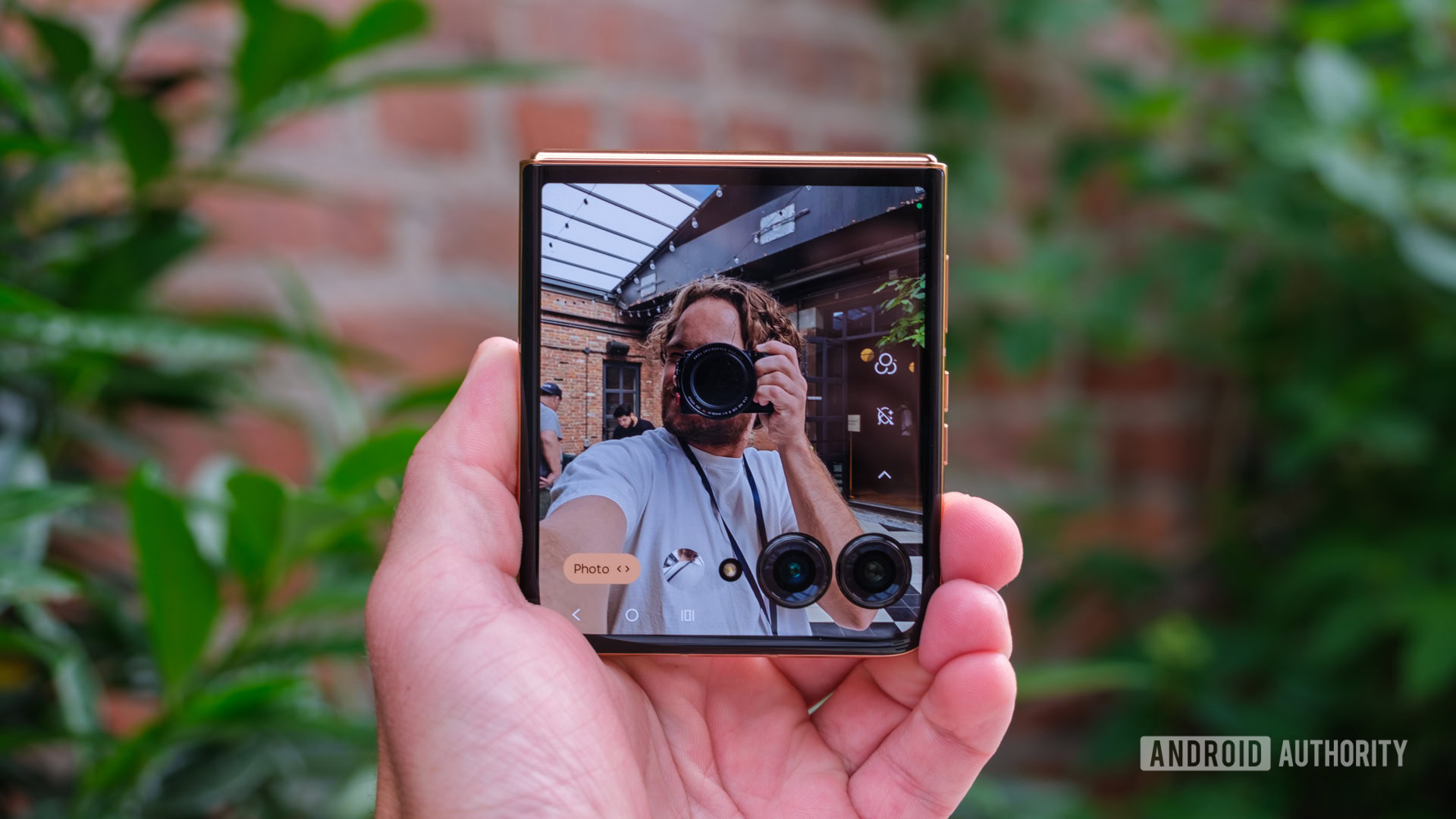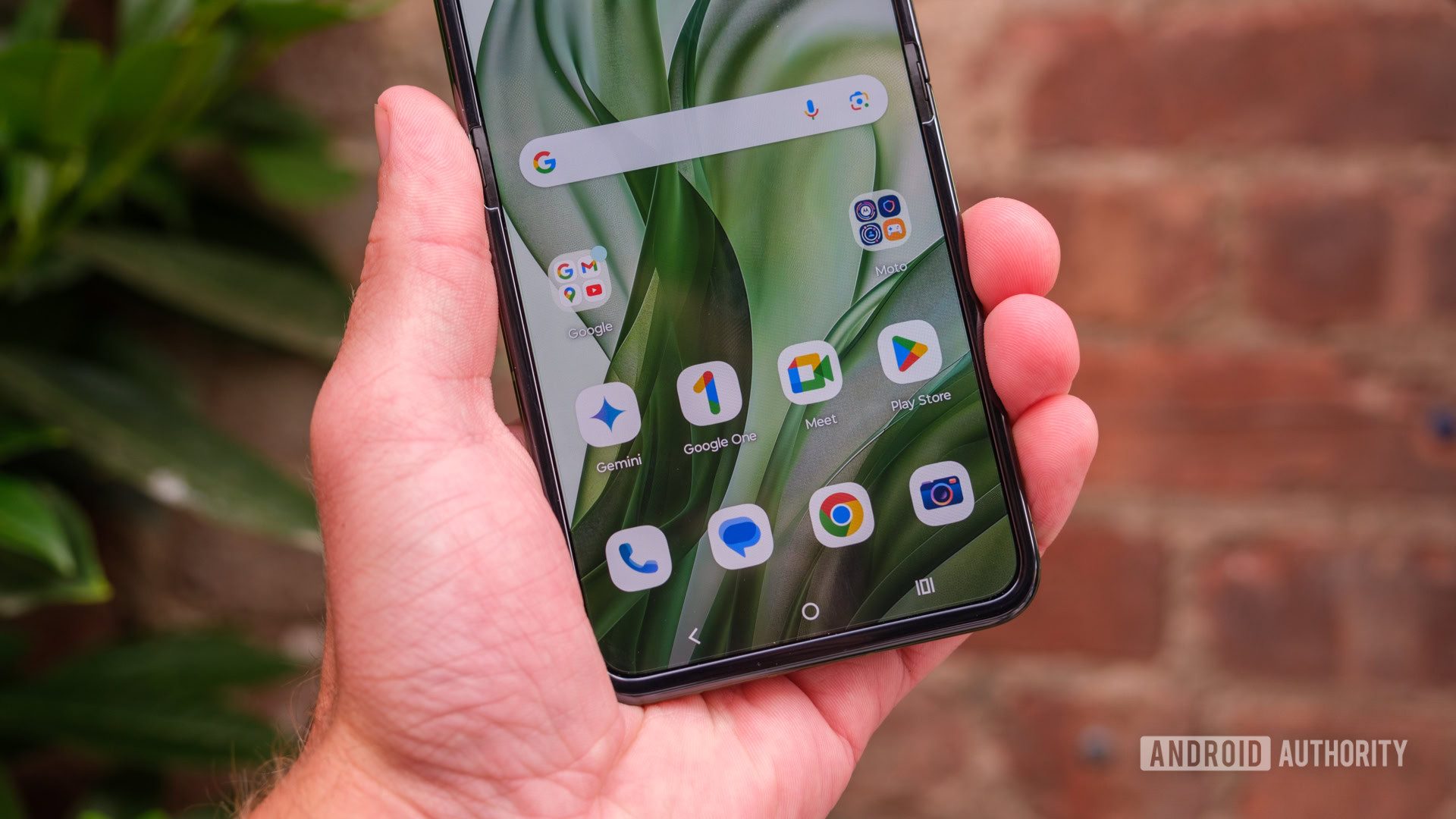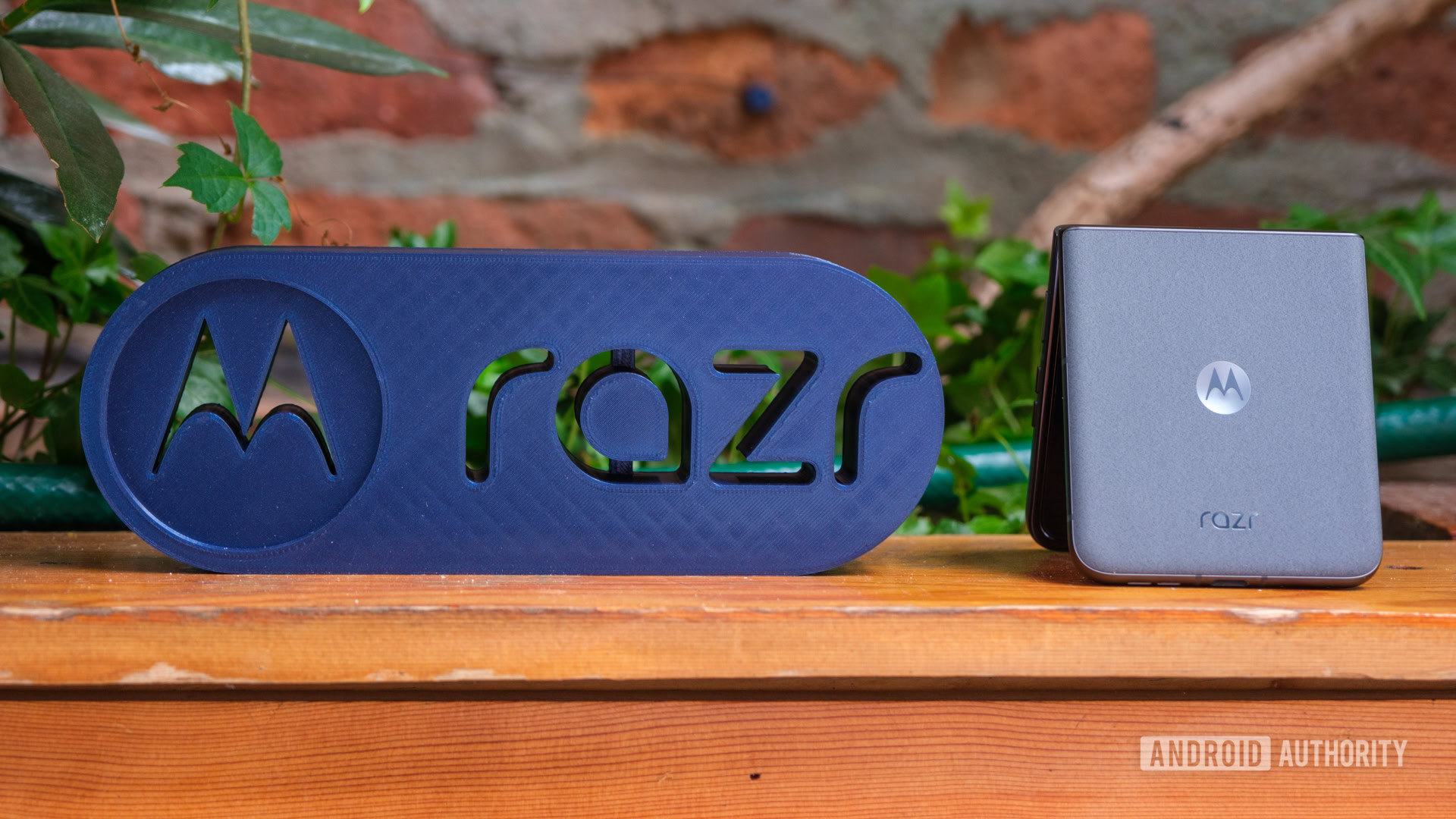Affiliate links on Android Authority may earn us a commission. Learn more.
The Motorola Razr and Razr Plus (2024) are bigger, better, and smarter than ever
The Motorola Razr Plus was easily my favorite flip phone of 2023. Despite its flaws, it beat Samsung to the punch with a larger cover screen, faster charging, and a more comfortable frame. And yet, by the end of the year, I found myself so much more willing to recommend its rival Galaxy Z Flip 5 to prospective foldable phone buyers for its more secure hinge, more reliable cameras, and better update promise. Now, it might be time to flip buyers back to the Razr.
Motorola just announced its 2024 updates to the Razr and the Razr Plus, and I got a chance to try them out ahead of the June 25 launch event. Let’s see what new tricks Motorola has for its sharpened Razrs.
Be sure to check out our hands-on with the two phones or hit the video above to see the Razr and Razr Plus in action.
Undercover (screen)
As with the 2023 Razr models, there’s no better place to start talking about the Razr and Razr Plus than with their cover screens. This year, both phones get size upgrades, with the Razr (2024) more than doubling its cover real estate to a 3.6-inch pOLED panel similar to what we saw on the previous Razr Plus. It’s not the same, though, with the Razr (2024) carrying a slightly lower resolution and only offering a 90Hz refresh rate instead of the Razr Plus’s 144Hz.
Speaking of the Razr Plus, Motorola’s more premium flip phone gains about half an inch of real estate, bumping to a 4-inch pOLED panel. It still stretches down and around the dual cameras, but the display extends closer to the hinge, eliminating the top bezel. On top of being larger, the Razr Plus’s cover display also offers a smoother (perhaps unnecessarily smooth for a 4-inch display) 165Hz refresh rate and up to 2,400 nits of peak brightness.
Where the Razr goes big, the Razr Plus goes even bigger.
Mentioning the hinge, Motorola claims to have completely redesigned that, too. It says that the hinge is 30% slimmer than the previous generation and better protected against dust. Honestly, the dust protection wasn’t an issue last year — I took the Razr Plus (2023) to the climbing gym several times — but I’m eager to see if the thinner hinge is sturdier than its predecessor. One of my main complaints with the previous Razr was that it never opened to 180 degrees and suffered from some side-to-side wiggle, neither of which is great for a flip phone. So far, the new hinge feels like an improvement, but I’ve only had the Razr and Razr Plus for a few hours, so I’ll keep testing.
Besides the extra real estate, Motorola hasn’t changed its cover display experience too much, which is a good thing. The previous Razr and Razr Plus already let you open any app you wanted on the cover screen without jumping through hoops (cough, cough, Samsung), and 2024’s updates are no different. This year, both flip phones support Google Photos on the cover screen, which means you can edit, manage, and erase photos and videos without opening your phone, something you couldn’t do previously.
Portrait mode

Motorola made an unusual move with the cameras on the Razr Plus — it ditched the ultrawide camera. Usually, when we see a dual camera setup, it consists of a wide and an ultrawide sensor, but the minds at Moto swapped the latter for a 2x telephoto sensor instead. The reason behind the switch is that Motorola realized many of its users were spending more time capturing portraits at 2x zoom than ultrawide shots at 0.5x zoom, so it made the trade.
Personally, I support the swap, as I’ve never been a massive fan of the ultrawide angle. I’ve also bemoaned Motorola’s underwhelming zoom capabilities on its foldables, so, in theory, this trade is a match made in heaven — for me, anyway. Both sensors pack 50MP resolutions, a huge upgrade over the previous 12MP and 13MP pairing. Sure, the individual pixels are smaller, and the cameras will have to bin by default, but the change means that the telephoto sensor can start with a central crop rather than turning to digital zoom right away. The change is already paying off, as the Razr Plus (2024) can zoom to 30x, more than tripling the 8x zoom from the previous model.
Some might miss the ultrawide sensor, but I welcome the telephoto zoom.
Motorola’s base Razr, however, isn’t quite as adventurous. It adds the same 50MP primary camera but sticks with the tried-and-true 13MP ultrawide as its backup. One sensor that both Razrs share is the 32MP internal selfie camera, which also happens to be the one I’ve used the least. It’s not a bad option, but it’s much easier to open the rear cameras with a twist of the wrist and use them for selfies on the cover display.
There’s still plenty of testing to be done, but here are just a few camera samples out of the Motorola Razr Plus (2024), including the full range of zoom capabilities:
No matter how you feel about the swap from ultrawide to telephoto, some of Motorola’s new software changes should give both Razrs a boost. For example, Camcorder mode now kicks in and starts recording automatically once you fold your Razr to 90 degrees and raise it in front of you. The Razr Plus is the more capable video camera of the two, as it’s the only one to offer 4K recording at both 30 and 60 frames per second from both the front and rear sensors instead of the Razr’s limit of 30 frames per second. Both phones also support Photobooth mode from their front and rear sensors because the early 2000s are really, truly back.
Hello (UX), Moto

We’ve gotten surprisingly far into these impressions without mentioning the buzzword of the year, but that’s about to change. As soon as Motorola finished telling us about its hardware changes and upgrades, it rolled right into its most important news — Moto AI. It’s decided to rebrand its longstanding My UX Android skin as Hello UX, and with it comes a host of new customization options and, of course, generative AI features in varying stages of readiness.
One of the first Moto AI features the company showed off — and we’ve since tried for ourselves — is its generative wallpaper options. Where Pixel phones let you fill in a series of Mad-Lib-like prompts for its own take on the feature, the Razr Plus offers Style Sync, which creates a wallpaper based on your outfit, and Magic Canvas, which lets you type out anything your heart desires and turns it into a wallpaper. Magic Canvas is a bit closer to what Google’s generative wallpapers feel like, though I must admit that Motorola’s decision to create only one wallpaper at a time is a bit of a drag. You either have to get lucky the first time or keep hitting the refresh button and waiting about 30 seconds for your next wallpaper to pop up.
Motorola is finally hopping on the AI train, or at least it will be later this year.
Moto AI is also behind several of the Razr’s camera updates, including Adaptive Stabilization, which helps to smooth out your videos, and Action Shot, a Razr Plus exclusive that tracks your subject’s speed and automatically adjusts the shutter speed to match.
Both the Razr and Razr Plus come with Gemini installed right out of the box, which means you’ll have to make a quick decision whether to try Google’s AI-powered assistant or stick with the one you already know and love. Whichever way you go, both Razrs come with three months of Gemini Advanced, so you can tap into Google’s most powerful generative AI models (and also enjoy 2TB of Google One storage at no extra cost, the real win).
Has the Motorola Razr finally caught up to the Samsung Galaxy Z Flip?
Moto AI aside, I can happily report that the dreaded shopping, entertainment, and gaming hubs that plague the Moto G series are absent. Also missing are Motorola’s apparent partnerships with 1Weather and Glance, which makes it easier to enjoy both the default weather app and cover screen as they were meant to be — ad-free.
Motorola Razr and Razr Plus (2024) specs
| Motorola Razr (2024) | Motorola Razr Plus (2024) | |
|---|---|---|
Display | Motorola Razr (2024) Internal: 6.9-inch LTPO pOLED 2,640 x 1,080 resolution (FHD+) 120Hz refresh rate 413ppi External: 3.6-inch AMOLED 1,056 x 1,066 resolution 120Hz refresh rate 413 ppi | Motorola Razr Plus (2024) Internal: 6.9-inch LTPO pOLED 2,640 x 1,080 resolution (FHD+) 165Hz refresh rate 413ppi External: 4.0-inch AMOLED 1,272 x 1,080 resolution 144Hz refresh rate 417 ppi |
Processor | Motorola Razr (2024) MediaTek Dimension 7300X | Motorola Razr Plus (2024) Snapdragon 8s Gen 3 |
RAM | Motorola Razr (2024) 8GB LPDDR4X | Motorola Razr Plus (2024) 12GB LPDDR5X |
Storage | Motorola Razr (2024) 256GB UFS 2.2 | Motorola Razr Plus (2024) 256GB UFS 4.0 |
Power | Motorola Razr (2024) 4,200mAh battery 30W TurboPower wired charging 15W wireless charging | Motorola Razr Plus (2024) 4,000mAh battery 45W TurboPower wired charging 15W wireless charging 5W reverse wireless charging |
Cameras | Motorola Razr (2024) Rear: - 50MP wide, f/1.7, PDAF, OIS - 13MP ultrawide, f/2.2, 120-degree FoV Selfie: - 32MP wide, f/2.4 | Motorola Razr Plus (2024) Rear: - 50MP wide, f/1.7, PDAF, OIS - 50MP 2x telephoto, f/2.0 Selfie: - 32MP wide, f/2.4 |
Audio | Motorola Razr (2024) Stereo speakers Dolby Atmos Snapdragon Sound 3 microphones | Motorola Razr Plus (2024) Stereo speakers Dolby Atmos Snapdragon Sound 3 microphones |
Video | Motorola Razr (2024) Primary: 4K at 30fps 1080p at 30/60fps Selfie: 4K at 30fps 1080p at 30fps | Motorola Razr Plus (2024) Primary: 4K at 30/60fps 1080p at 30/60fps Selfie: 4K at 30fps 1080p at 30fps |
Durability | Motorola Razr (2024) Vegan leather back Gorilla Glass Victus cover screen Ultra-thin glass display Aluminum frame IPX8 rating | Motorola Razr Plus (2024) Vegan leather back Gorilla Glass Victus cover screen Ultra-thin glass display Aluminum frame IPX8 rating |
Connectivity | Motorola Razr (2024) Wi-Fi 6e Bluetooth 5.4 | Motorola Razr Plus (2024) Wi-Fi 7 Bluetooth 5.4 |
Biometrics | Motorola Razr (2024) Side-mounted fingerprint reader | Motorola Razr Plus (2024) Side-mounted fingerprint reader |
Ports and switches | Motorola Razr (2024) USB 2.0 via USB-C | Motorola Razr Plus (2024) USB 2.0 via USB-C |
Software | Motorola Razr (2024) Android 14 3 full Android updates 4 years of bi-monthly security updates | Motorola Razr Plus (2024) Android 14 3 full Android updates 4 years of bi-monthly security updates |
Dimensions and weight | Motorola Razr (2024) Open: 73.9 x 171.3 x 7.2mm Closed: 73.9 x 88.1 x 15.9mm 188 grams | Motorola Razr Plus (2024) Open: 73.9 x 171.4 x 7.1mm Closed: 73.9 x 88.1 x 15.3mm 189 grams |
Colors | Motorola Razr (2024) Koala Gray Beach Sand Orange Spritz | Motorola Razr Plus (2024) Hot Pink Midnight Blue Peach Fuzz Spring Green |
In the box | Motorola Razr (2024) Motorola Razr (2024) USB-C cable SIM ejector tool Quick start guide | Motorola Razr Plus (2024) Motorola Razr Plus (2024) USB-C cable SIM ejector tool Quick start guide |
Motorola Razr and Razr Plus (2024) hands-on: The Razrs I wanted all along

I’ve only had the Razr and Razr Plus for a few hours, but it’s long enough to know that Motorola means business. Both flip phones are significantly better than their predecessors, and they once again put the heat on Samsung to do something interesting with its next Galaxy Z Flip update. Motorola didn’t have to make its cover screens bigger (but it did), didn’t have to swap its ultrawide camera for a telephoto on the Razr Plus (but it did), and didn’t have to put its own spin on some of Google’s AI features (but it did). Properly fixing the hinge would have been enough to put both Razrs right there with Samsung, but I’m glad to see Motorola do more.
I was surprised by just how ambitious Motorola was willing to be with its relaunched Razrs in 2023, and while the latest generation is still not perfect, the ambition is paying off. I’ll need to test the pair in a little more detail to see how the decision to use Qualcomm’s more affordable Snapdragon 8s Gen 3 fares in the Razr Plus and how long it takes for the full Moto AI rollout to reach both flip phones, but the experience is already pretty good straight out of the box.
Motorola did more than fix the hinge, and the Razrs are ready to compete.
As for availability, Motorola is set to launch both of its Razrs for pre-order on July 10, 2024, before opening up wider sales on July 24. The base Razr will once again start at $699 with 8GB of RAM and 256GB of fixed storage, or you can grab the Razr Plus for $999 with 12GB of RAM and 256GB of storage.
What do you think? Has the revamped Razr finally caught up to the Galaxy Z Flip? Or will you wait to see what Samsung’s next update has in store?

Expanded cover displays
Smooth, ad-free software
